John Lobb is among the names that stand out when talking about men’s shoes. With the brand’s long and fascinating history comes a hefty price tag on their offerings! But, what do you really get when buying John Lobb shoes? Let’s dissect them in today’s installment of Cutting It Apart to find out whether the prestige and price equate to quality!
*Note: Be sure to watch today’s video to understand all the nuances of the deconstruction process!
Video Transcript [Lightly Edited for Clarity]:
Sven Raphael Schneider: Welcome back to the Gentleman’s Gazette. In today’s video, I’ll show you what a thousand-plus-dollar, ready-to-wear shoe from John Lobb Paris looks like and we’re also cutting apart a $10,000 shoe from John Lobb London, which is a bespoke shoe.
John Lobb Paris Ready-to-Wear Shoe
Sven Raphael Schneider: First up, let’s start with the ready-to-wear shoe. First up, I see there’s an “S” in here. I think that means second and, as you know, sometimes, you know, they make a shoe and they realize, “Oh! It’s not perfect.” And they still sell it as a second. That doesn’t mean that the way it was made was any different than a regular shoe. It just had a blemish by the time it was sold. Start putting it down here and taking off the individual heel.
Heel
So interesting. First of all, here you see it was nailed together. All right. We see the heel here. We can cut into it slightly. Looks like leather.
Nails, interestingly, have a flat head across the board as you can see. Maybe if we hammer them out the other way. Yeah, it’s basically just a straight piece of metal. It’s not even like a nail that’s hammered in. Interesting.
You can see there is a brown rubber heel cap. I like that they used a brown color. Most companies use something that is black. But, this is a brown shoe with kind of a brown sole edge dressing. So, actually trying to make this a brown is, I think, quite cool.
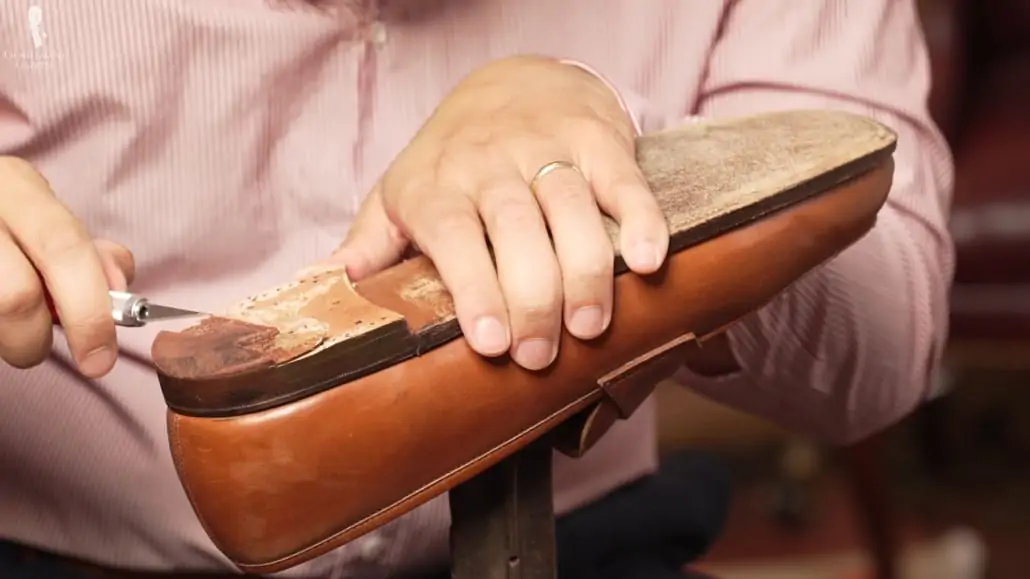
There are quite a few nails in here from the inside out and nails the other way in. I mean, one, two, three, four, five. Quite a few nails.
Next, in the upper layer here, you can see nails with a head. You can also see tacks here, which is interesting. and then the last layer of the heel There’s like 25 or 23 OSP. Yeah, I mean, it seems, if we cut it, a solid piece looks like veg tanned leather.
Compared to that first layer, seems a lot stronger. I’m going to try to cut this. This is much more condensed. Seems like real hard leather.
Sole
Now, you also see here a channel meaning this is a Goodyear welted shoe that has been channeled. It’s a higher-end way of sewing shoes than, let’s say, an Allen Edmonds. But, basically, what they do first is they cut open this channel, then they sew it, and then they fold the channel back down and glue it back down. So, it looks neater at the sole.
I’m going to start actually by cutting in between here, leaving this intact. Well, I could try to actually open it up a little bit. So, this is obviously a 270-degree welt from here to here. Nothing in the heel. And it’s not necessary at all.
Here you can see the thread. I could try to cut the thread here a little bit. Seems like the nails really attach this sole, this outsole onto the welt and the heel. In the middle here, you can see a massive shank that is metal-supported.
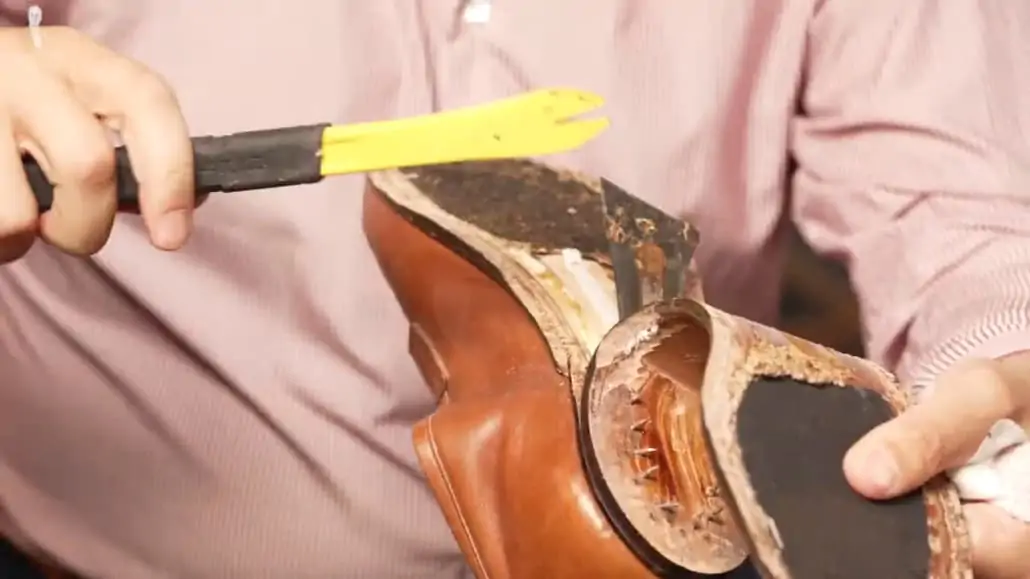
So, here we see a shank. Metal enforced. Interestingly, this material here, I don’t know what it is. It’s pretty hard. It’s not leather. Seems to be some kind of rubber.
Yeah. And then, this is the outsole. See here. John Lobb Paris. Made in England. These are all made in Northampton, England. Then here, on the inside, you can see a bit of the cork residue here. This was the cut welt and then here, it seems like a rubber insert. Maybe to prevent any kind of wetness from seeping in right underneath where you stand.
There is kind of a number: 3-1-5-0-5. And a 2 maybe? I’m not sure what that is.
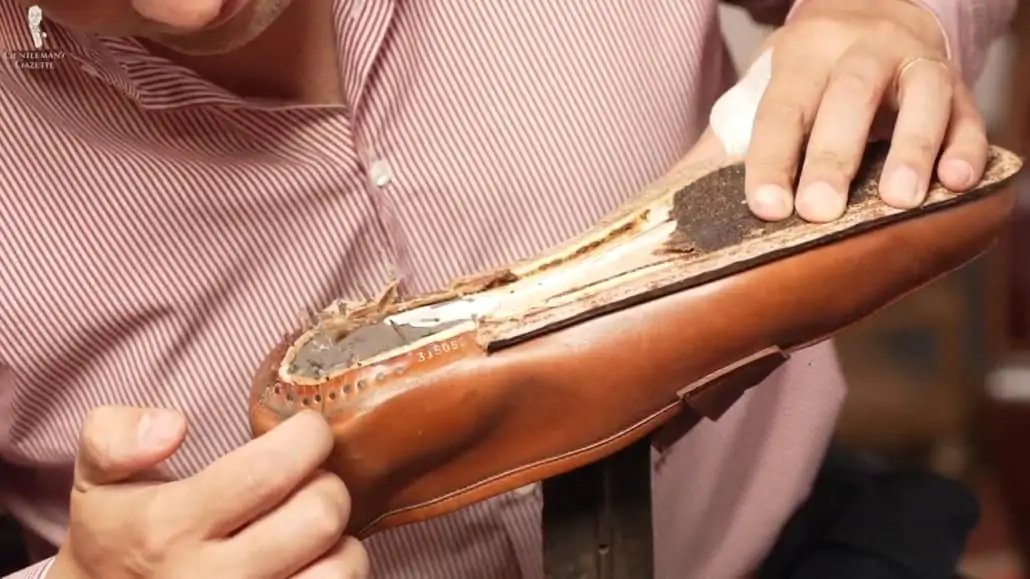
Nice stitch density. Looks like a machine stitched. It’s not like a hand welt or anything. And inside here, you can already see the gem band. Here you can see a loose, kind of old-school nail.
Okay. Rest of the welts here. You can again see the plastic. It’s a leather welt. The thread is slotted here, seems all of good quality. Otherwise, we’ll see the gem band here. Interestingly, back here in the heel, seems to be some almost like a cardboard product really. See how it shreds.
Uppers
So, at this point, I think we’re going to switch to the table. Take apart the uppers. Taking it all apart from the inside.
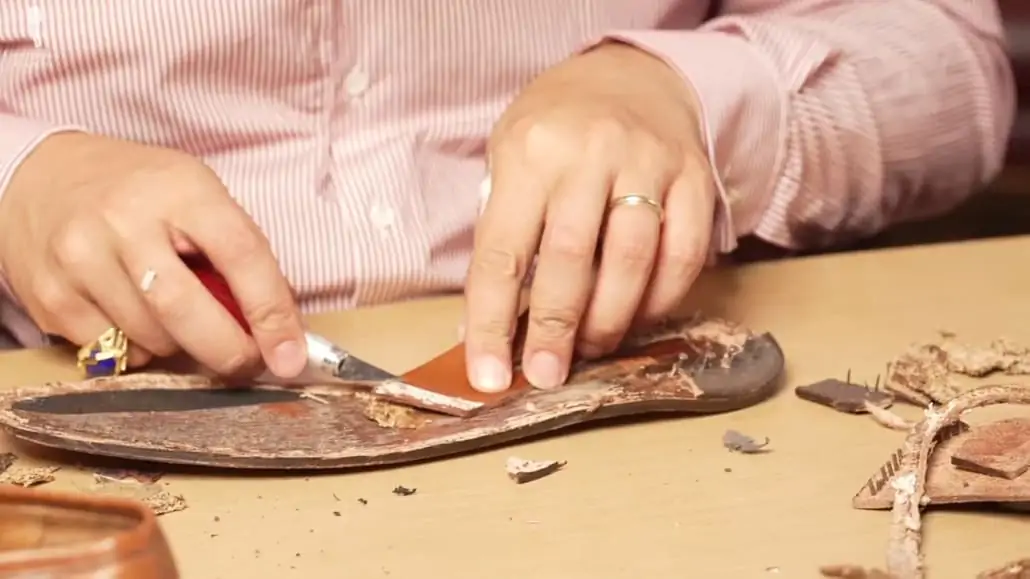
No surprises here. Just some upper leather. Out here, you can see there’s a little tape, probably meant to you know really just reinforce the level.
Strap
Looks like they’re two pieces of leather. Two pieces of leather. That’s it here. Now, start it here. See the top here was sewn together.
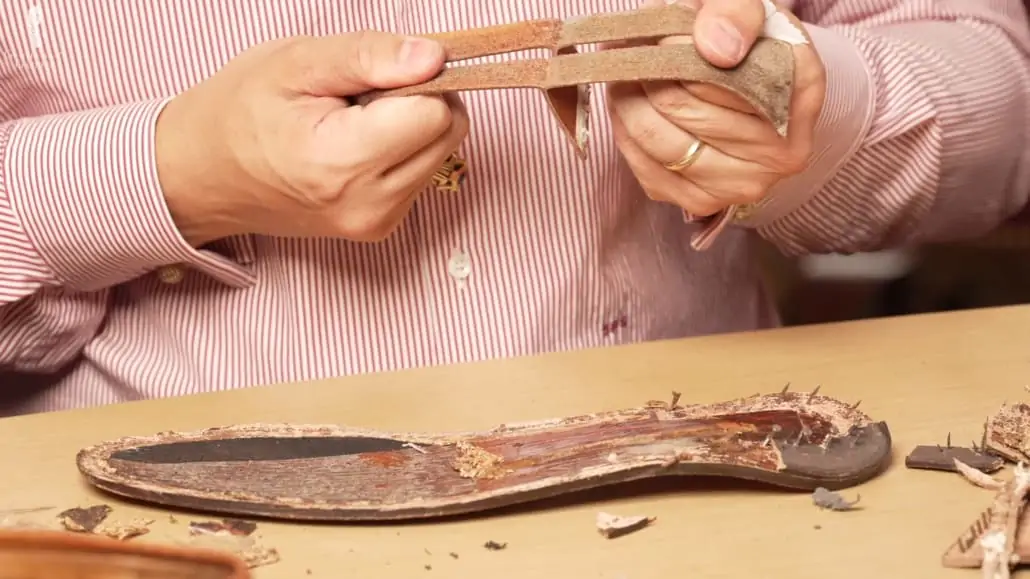
Tongue
Trying to cut that. I’m trying to cut open the tongue here. Taking it apart. This is the upper leather here. See a little bit of fabric, supposed to probably make it all feel softer. You squish on the leather. And here you see this. It’s a slightly different material. Looks more like a canvas really.
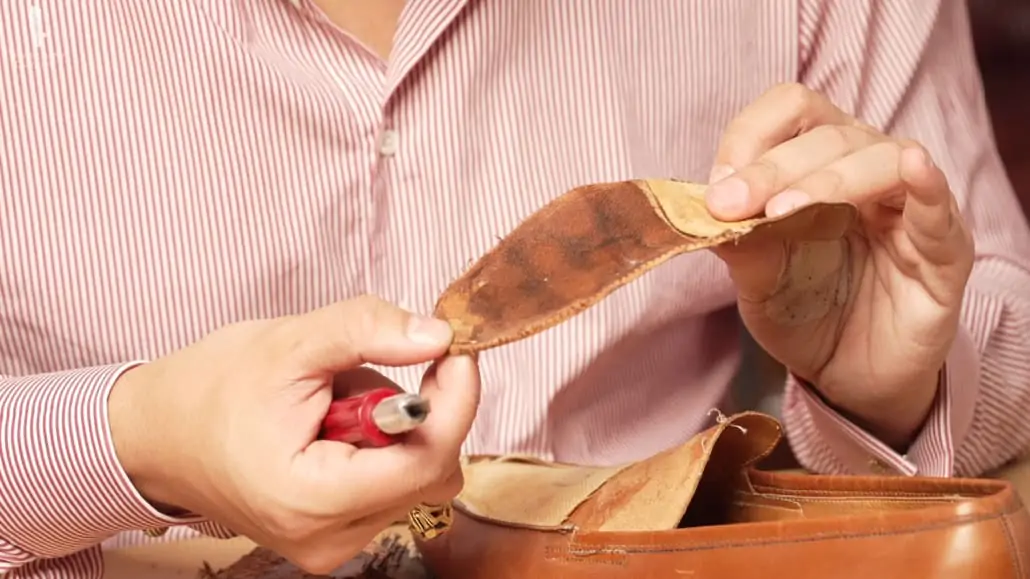
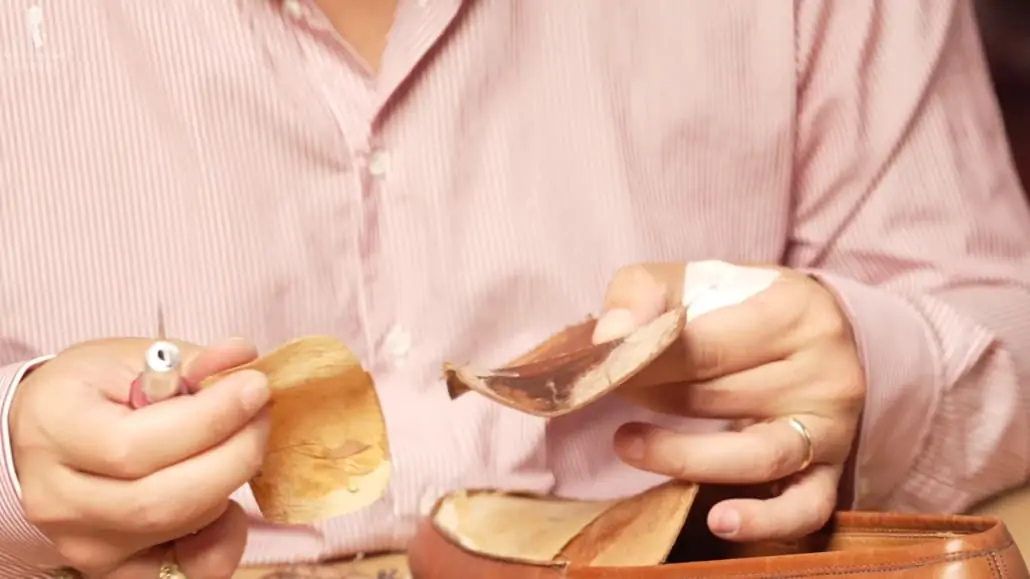
Upper Lining
Now, I see the lining stitching here. So, on the inside, it all feels like a leather lining. And this is really just a layer of fabric. And you see here the edges where it was sewn. It had this kind of backing here. This is just a front kind of liner. Very similar to the kind of Allen Edmonds shoes. It seems to be like more of cotton fabric, has this kind of flannelly effect that is soft to the touch in between, and makes the leather feel soft and sumptuous.
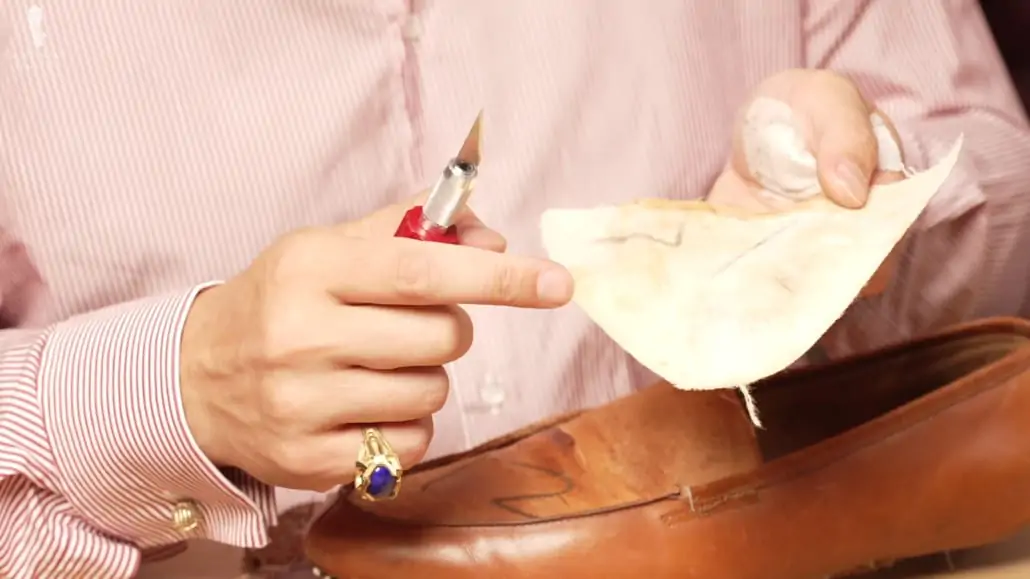
Sock Liner
John Lobb sock liner has this little piece of foam placed in the heel area. Just so, when you step on it, it’s a little bit cushioned. Now, here, on the insole, you can see the nails through the insole into the heel.
They’re marked with 12. This was a shoe size 12. That’s exactly what’s happening here. They probably pre-cut pieces that they use unlike a shoemaker for bespoke shoes, who would cut this piece because everything is unique.
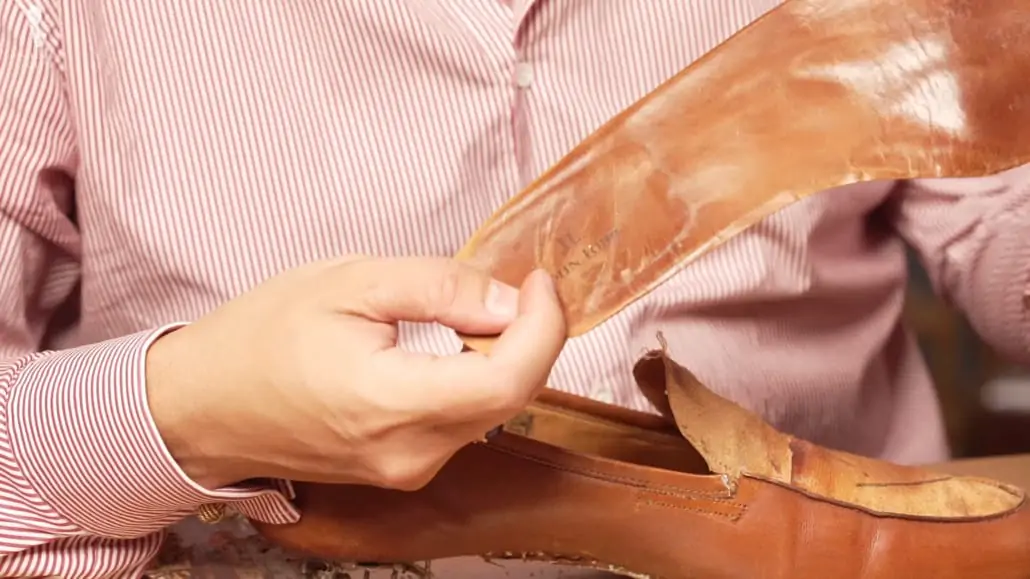
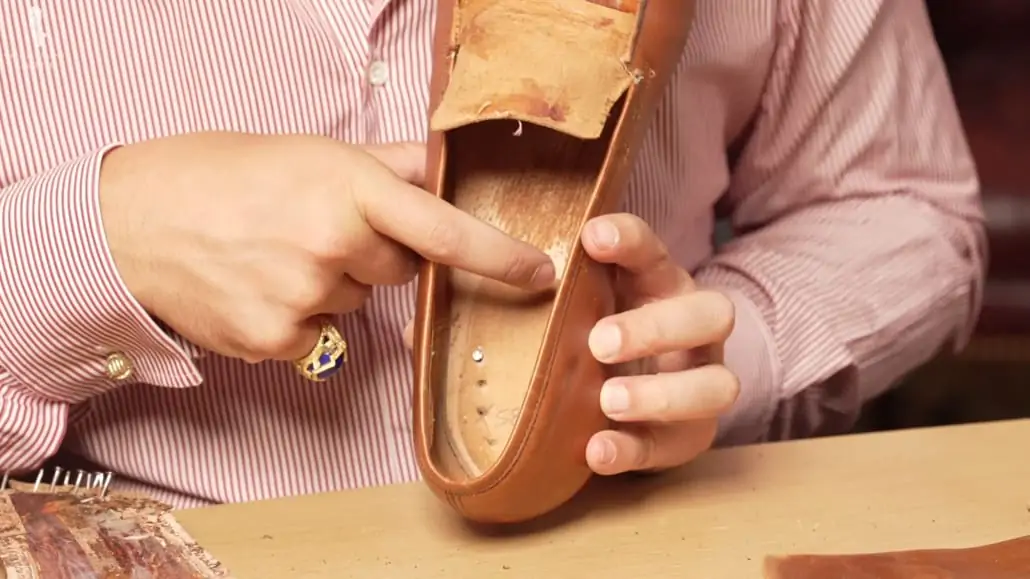
I cut apart this top piece that was folded over. Basically, you have our layer then a piece of, I don’t know, fabric or muslin in a lining leather. Then, put it over and sewn all together so it looks neat on top and you have this kind of folded edge.
I’m just going all apart here. Let’s see what else we find. You can see up here they had this strip that was sewn in here, probably to keep it nice and filled out so it doesn’t crease and it feels full and lush.
Outer Shoe
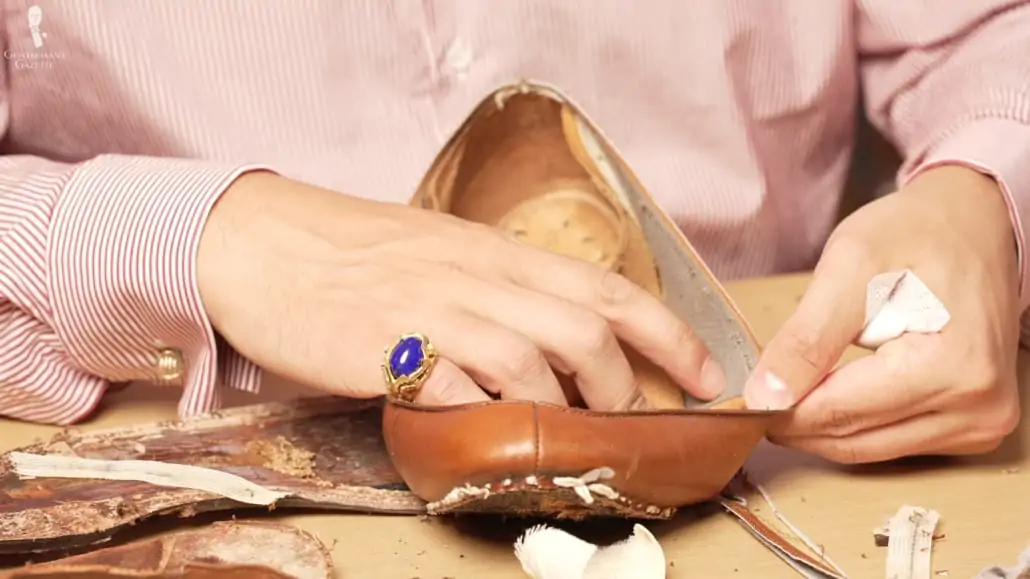
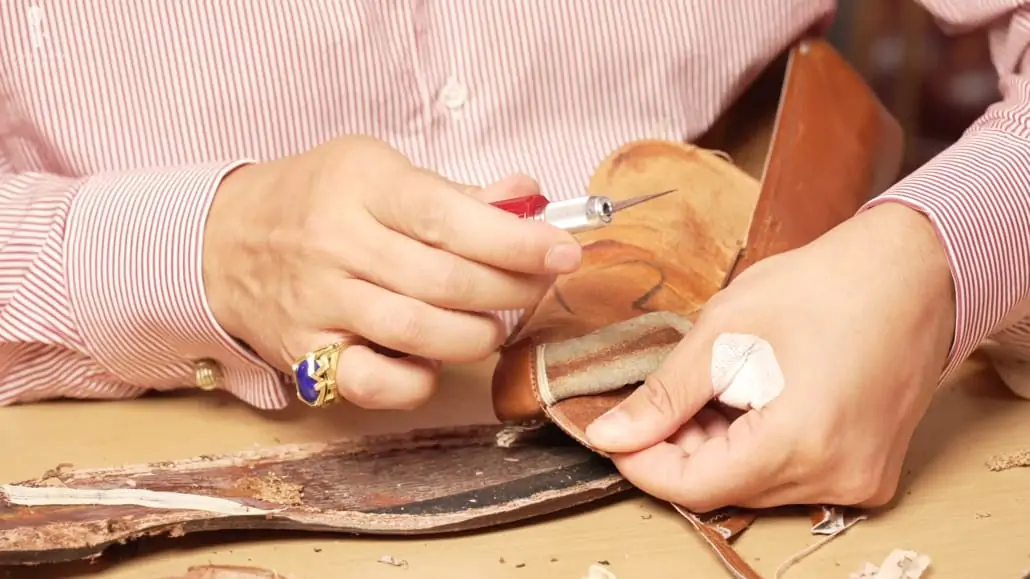
You can see lining leather, fabric, outer leather. You can see this is also backed here. Then it’s a very kind of a soft cap in the front, which, for a loafer, is normal for an Oxford. So, you’d have a stiffer cap. This seems to be leather. It’s a leather product for sure. Seems to be leather. Not very stiff.
Here I’m just ripping the outer layer off basically. Seems to be a nice, you know, quality calf leather. Not dyed in the same color all the way through, but that’s okay. That’s not necessary.
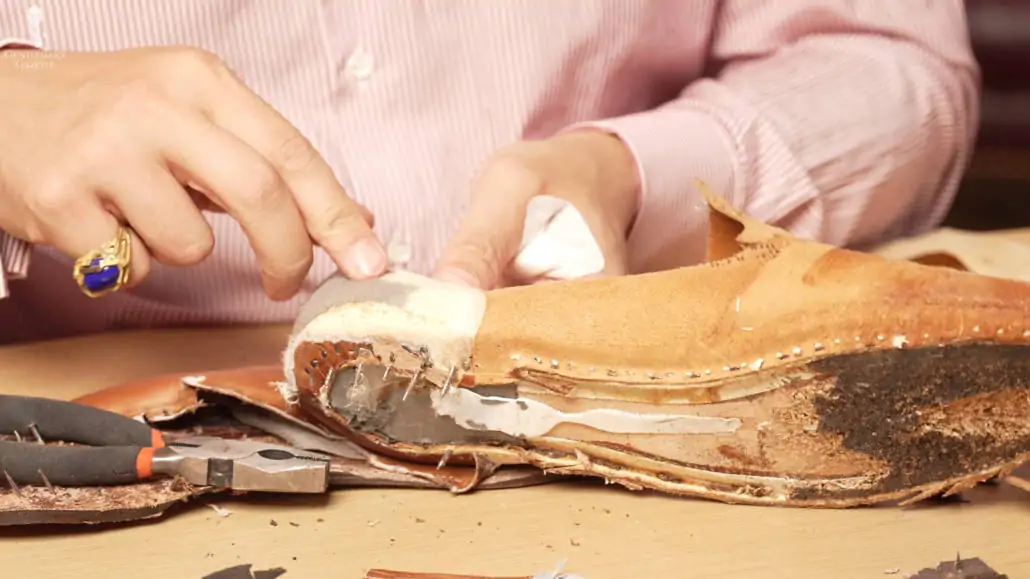
Heel Cap
Here, now, you can see this thermoplastic heel cap that’s a lot stiffer. On a, you know, higher-end bespoke shoe, I would expect a full leather heel cap. They definitely made it with all those nails though. It’s a lot of work.
Other Parts
There’s another seam tape here in the back. Because there you have the back seam.
Yeah. This is the loafer with just the lining, the insole, and the gem band. Because you see the gem band here with the tags inside out. The rusty. And everything here in the back.
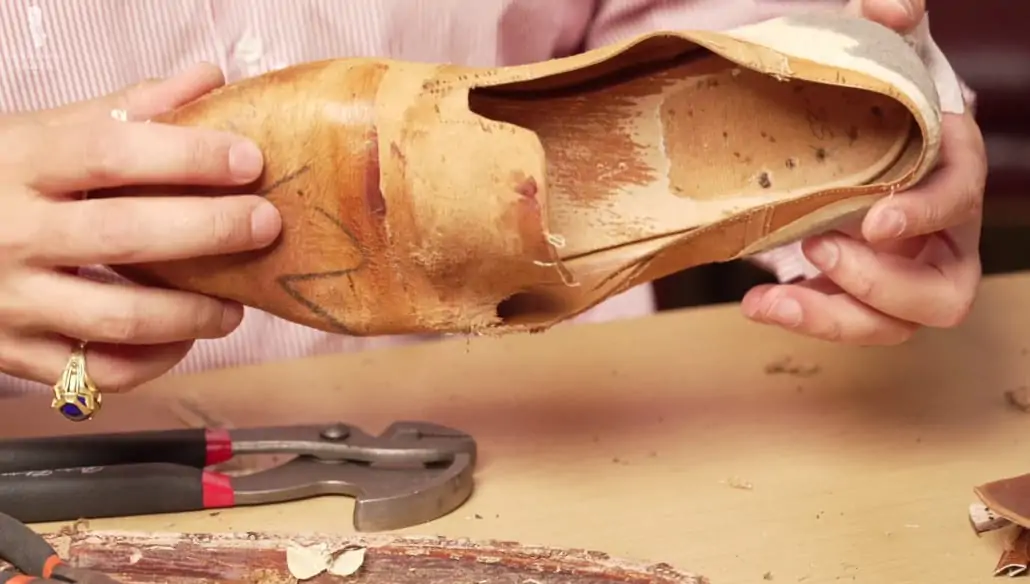
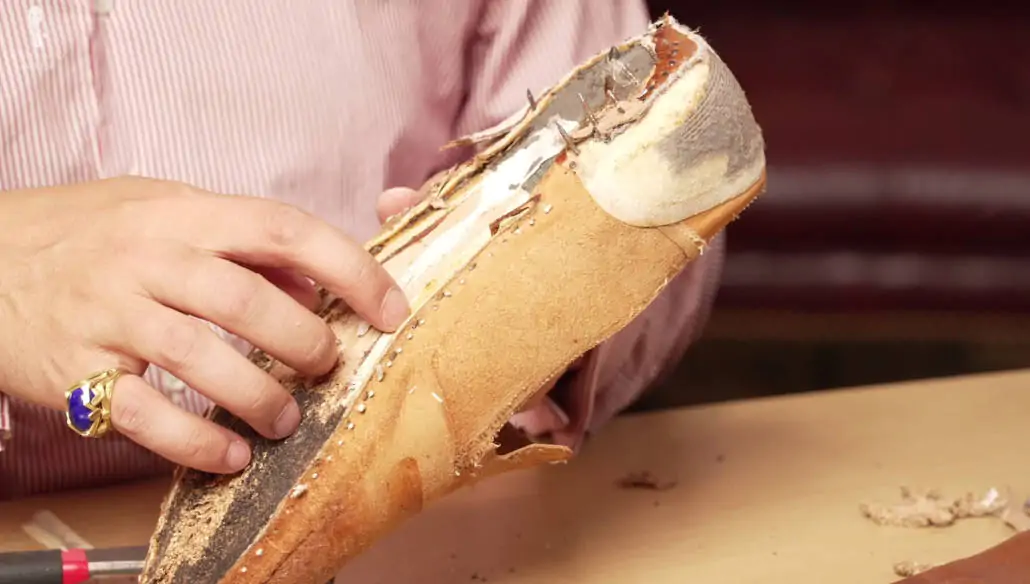
Look at this here. All these nails here on the heel. Quite a bit of stuff. And here is the heel cap. Just be careful so I don’t get the nails. But, you can see here thermal, kind of starched whatever cap.
Now, this is the insole here now. Nail’s still in there. The insole seems to be nice. Nice leather.
The sock liner on top is perfectly normal. I like sock liners, some people don’t. Some people feel like they hide something. But, I don’t think there’s anything wrong with sock liners.
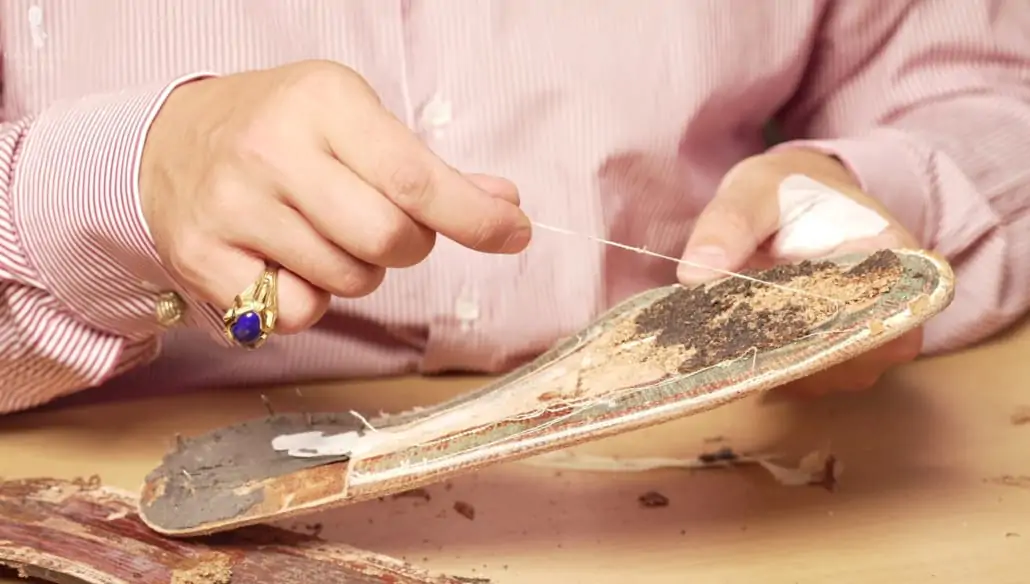
Grab this gem band here. It’s glued on. Here’s the glue. A mix of cork and glue. This part is the glue element. Little foam part that was underneath the shank. And this is that final kind of pressed material leather. So that’s it that’s inside a John Lobb Paris ready-to-wear campus loafer.
Conclusion on John Lobb Paris Ready-to-Wear Shoe
Sven Raphael Schneider: Outer layers seem to be a quality, you know, calf leather. Interior, surprisingly, we have the shank. Metal reinforced some kind of artificial material shank.
And then, these kinds of pressed leather products here surprised me. I would have expected maybe higher quality leathers throughout, maybe even for the heel cap, the toe cap. Considering the price, I’m a bit disappointed by that.
John Lobb London Bespoke Shoe
Sven Raphael Schneider: Now that you’ve seen what the ready-to-wear shoe looks like, let’s take a look at the bespoke shoe from John Lobb [London].
First of all, with a bespoke shoe, it is truly made for one individual and is unique. So, if you take a closer look at these shoes here, they are not symmetrical. For example, here at the heel, you can clearly see the right shoe has a much taller heel than the left one. So, this person, obviously, had a shorter right foot than the left one.
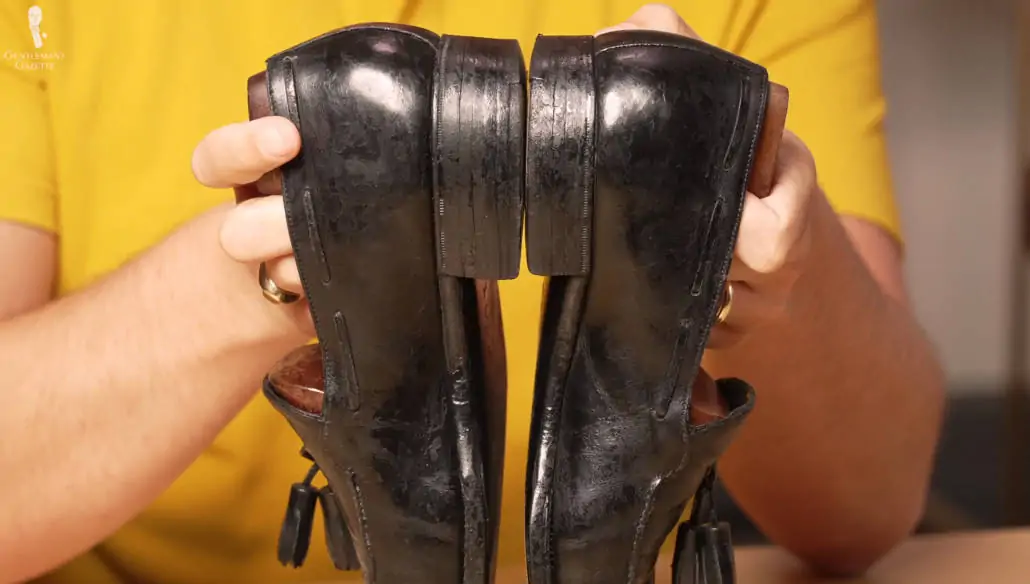
These are all things you can do on a bespoke level that you can’t do on a ready-to-wear level. The shape is even slightly off. And the art of a bespoke shoemaker is to take two feet that are different and make the shoes look the same, but still, keep kind of a fit that is perfect.
Shoe Trees
You can also see here, these come with the shoe trees, kind of carved out at the bottom. Just that lever here. And they fit the form of the shoe. Interestingly here, in this one, you can see leather was applied, right? So, it really fits the entire shoe. But, obviously, even the shoe trees are different as you can see.
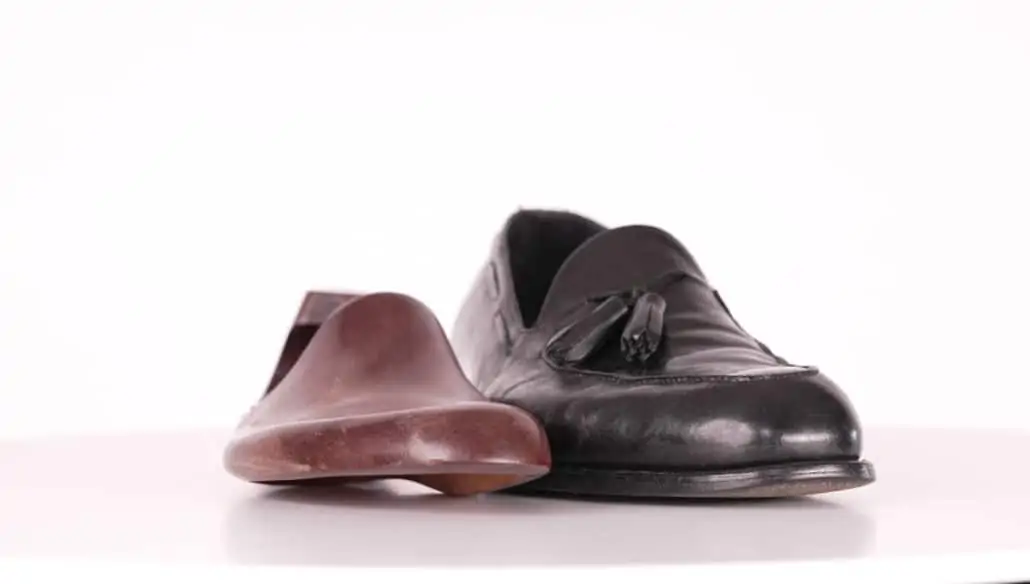
They have the original John Lobb stamp. So, they have not been repaired by any third party or anything. These are like original John Lobb shoes as you’d get them when you buy them. You can see the royal warrants here on the inside of the insole. Sometimes, they have a colorful lining. In this case, it’s all black.
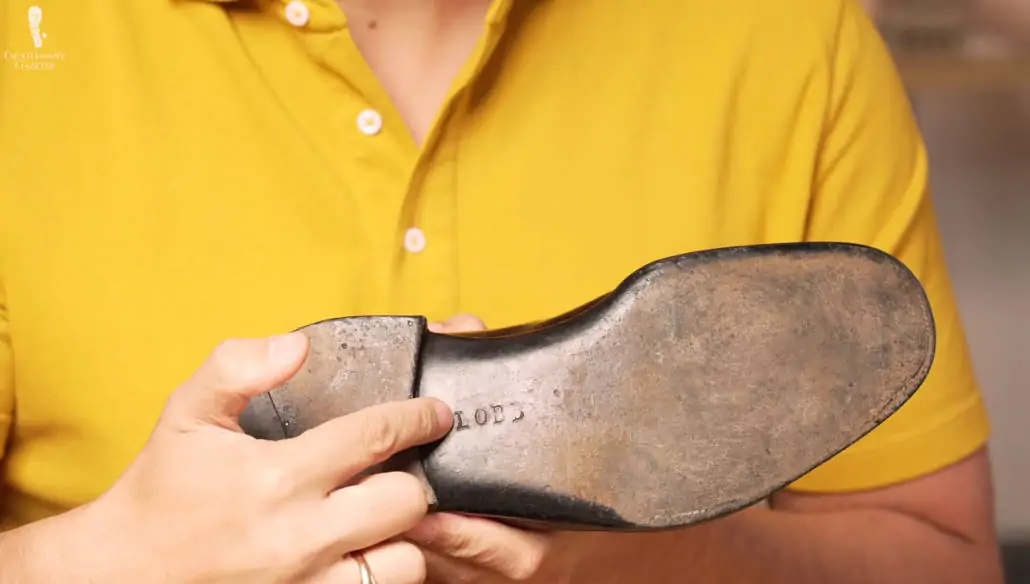
But, well, without further ado. Let’s cut them open.
Heel
So, now, we’re taking off the heel first. Taking it apart. I see little nails here. Let’s see if we can get the layer off. See what’s there.
The first layer, all leather. High-quality leather. Thin little nails of different lengths as you can see. This one is much deeper. You can see they don’t have very big heads. They’re basically just flat. All right.
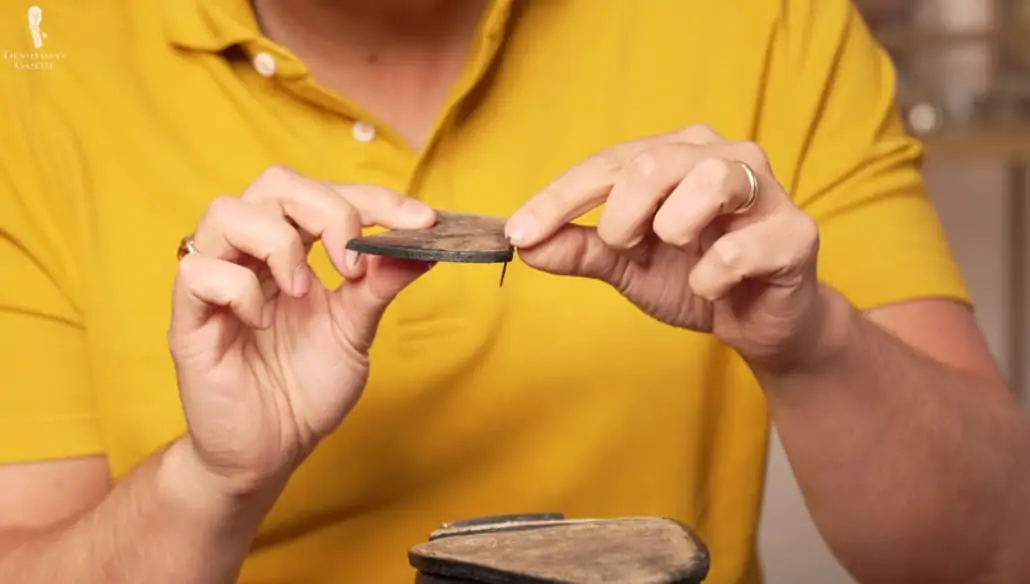
Next up, let’s cut into the next layer here. Here you can see there’s a rubber heel block. Some good leather here. Kind of this rubber heel block. You see it’s two-layered, so leather goes up until here and then up until here. So, it’s a nice way to make sure it all stays on there.
Next layer of leather. Now, look at that. You can see lots of nails in here. All the way around. Little ones. Now, here, you can see in the shoe.
This is the outsole. And here, they definitely build up the heel around it, up until here in these smaller layers. All by hand. So, you get that really tight fit up here. But, then the straight-level heel. Something you see on bespoke shoes or custom shoes that are handmade, not so much on factory shoes. Would just take too much time.
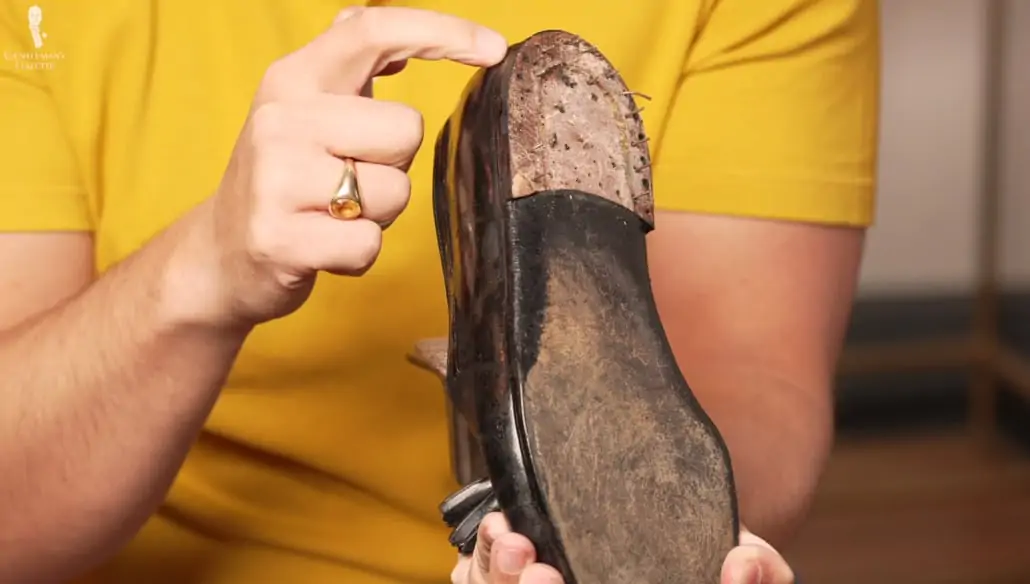
You can see I’m having some like black hands here. It all comes from the shoe being polished and the layers never being taken off. They just stayed there forever and ever. I can see the leather is so brittle that it just breaks. But, if you look, the angle here, much wider than here. That’s what it goes all the way around.
Sole
Now, here, you can see they created a channeled sole. You see the little channel here and I can open it. Typical for a bespoke shoe. We saw the same on the ready-to-wear shoe channel. So, I’m just going to cut this open here now.
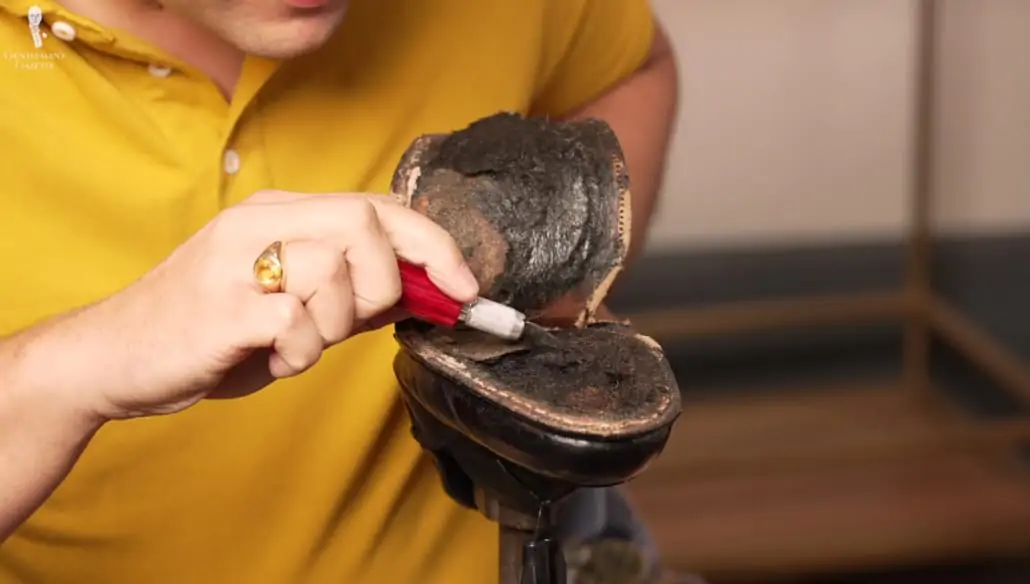
Let’s see the channel. This is interesting. See kind of a hairy material in here. I can’t really tell you what it is. But, it’s black and it definitely looks like hair of some kind.
It’s broken off. Interesting material here. I wonder. I mean, in suits you use horsehair. This is all glued together heavily. But, it’s supposedly a material similar to cork, probably, that helps you cushion and stand on it.
All right. Just count all these nails. One, two, three, four, five, six, seven. I mean, that’s a lot of nails here just in one shoe. Could probably take me quite a while to just count all the nails in this John Lobb bespoke shoe.
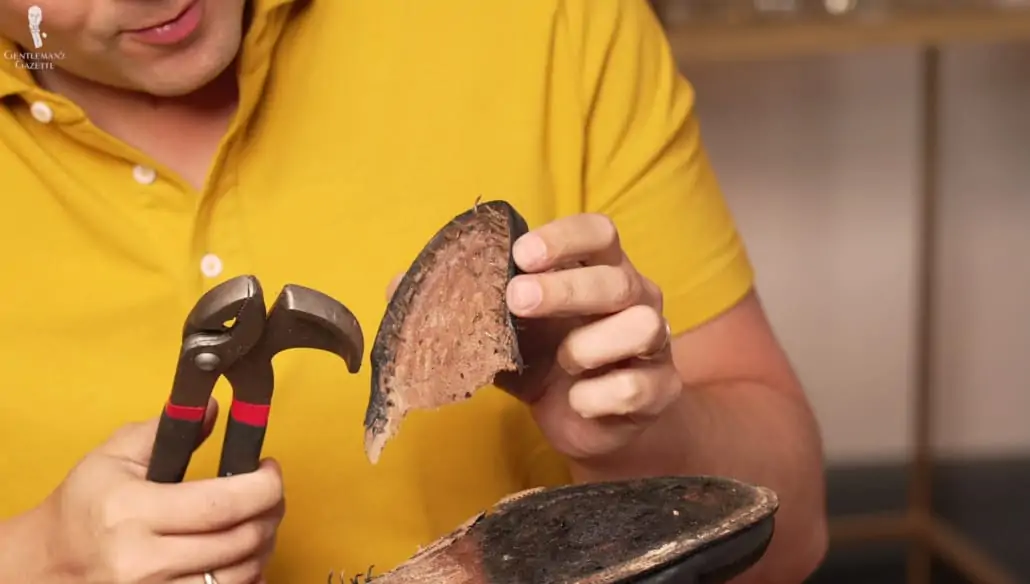
Now, we can see a layer of cork here, underneath this kind of midsole-looking layer. There we go. Midsole. So, here, they had cork in the back. This is not the kind of mixed glue and cork mixture, but it’s actual cork just cut, which is of higher quality.
Now, in here, you can see there is no gem band. Instead, there is a leather lip that is worked out off the insole. That’s the big difference between a Goodyear welted shoe and a hand welted shoe.
So, the insole, they worked out an area to fill this all in with this interesting glued material. Take some of that off. Now, obviously, we have a welt here. So, I can go around and try to cut that off.
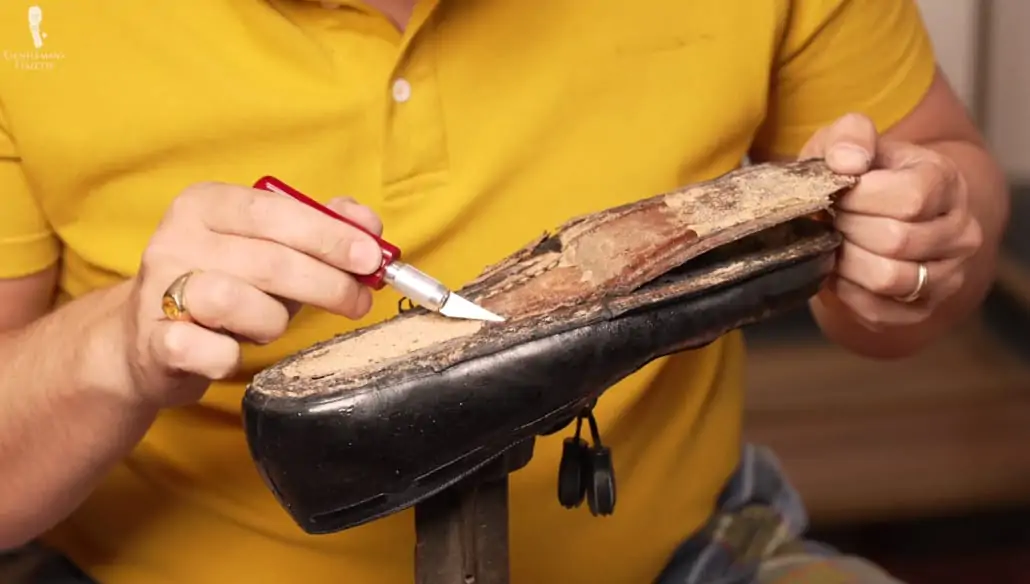
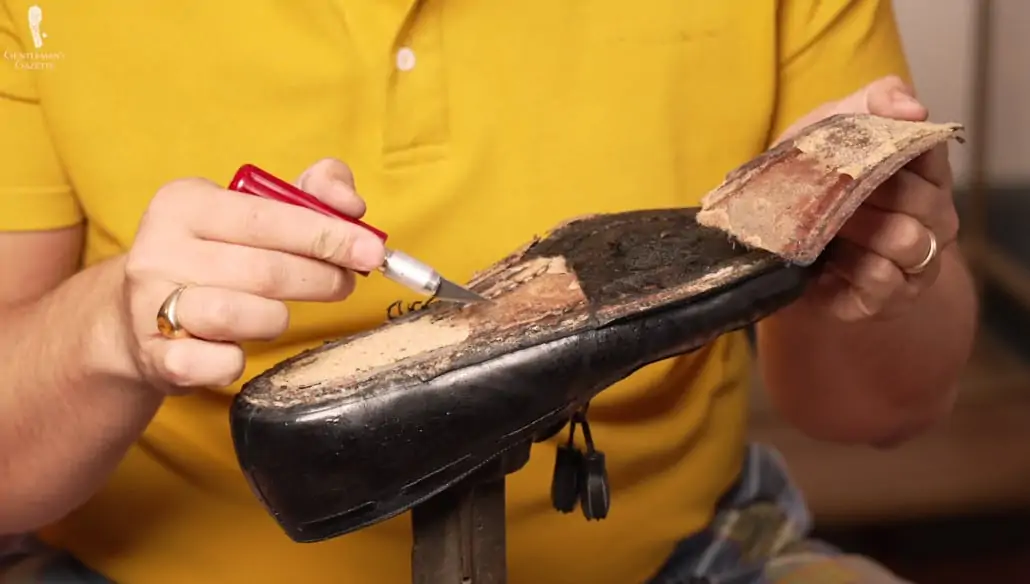
Interesting use of the leather layers. Even though it’s a black leather, it’s not dyed all the way through. So, yeah. Here you can see this is the welt and this is part of the uppers. Leather welt and already cut into that part here.
From here, you can see this is the insole and the channel that was worked out nicely. Let’s get some of this cork out here in the back.
Interesting, you can see here, there’s no particular shank built-in. This is all leather. This is what’s underneath. That’s part of the insole. And then here there’s no extra layer of leather. It’s just that cork that’s put in here.
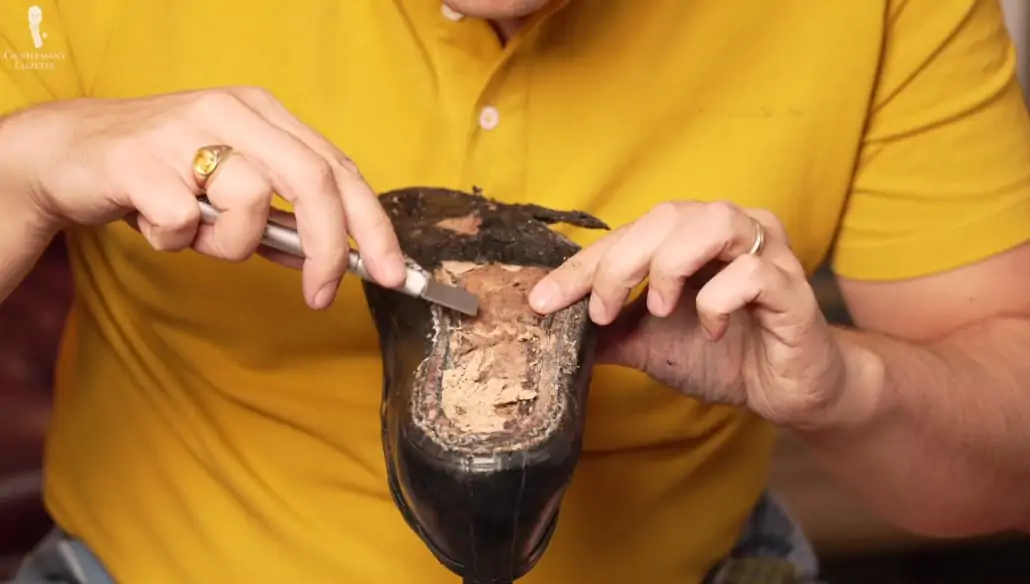
Uppers
First up, I’m going to take the tassels off. This is actually not just fakery. But, they actually come out. You can see how they really added a lot of wax on top. You can see here the entire table getting dirty.
I’ll start up here. You can see there’s the lining leather, then there’s the piping, and then there’s the upper leather. Something going between those. Just try to cut it open.
You can see, in terms of construction, it’s quite nice. It’s just another layer in between here. Not just the two layers. Just so it looks better on top. I’ll do the same here on the side.
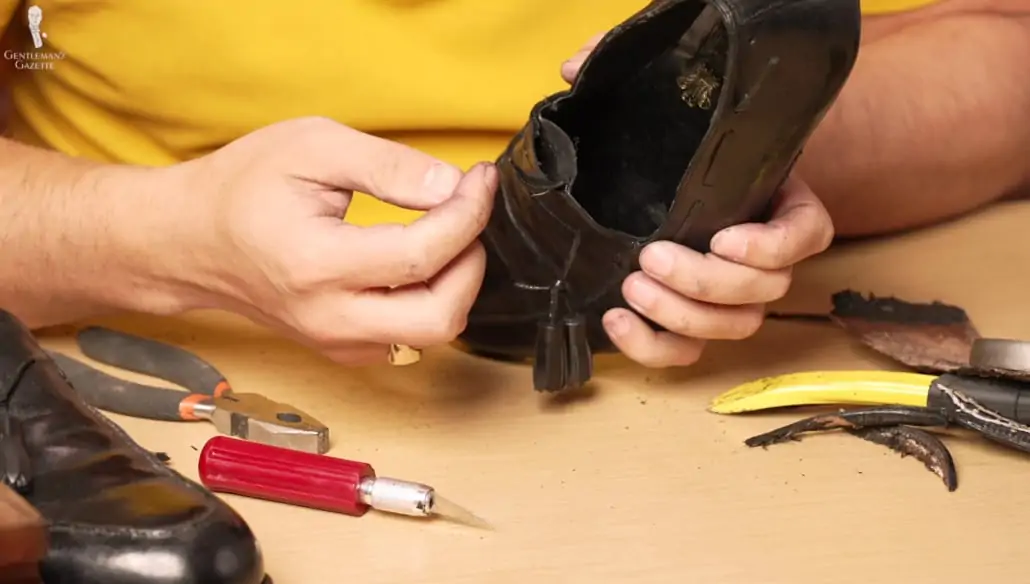
Okay. Now, you can see that this was the upper leather. Part of the uppers. Lining leather, black leather, and then, the cap is actually also leather.
Heel Cap
Now, we’re taking apart the heel. See here. Stitching in the middle. The back cap is a piece of leather. Then, here on the side, in the front, you have one. One here on top. Pretty cool. Now, you can see here, there are no nails anymore here. But, you can see, for example, a little nail hole.
So, unlike with an industrially-made shoe where, you know, the uppers are pulled over the last and then fix in with some tacks, here, the shoemaker adds nails one by one and then, once the shoe is firmly on there after a while, they can remove those nails back out and so, there are no more nails left in the shoe at this stage.
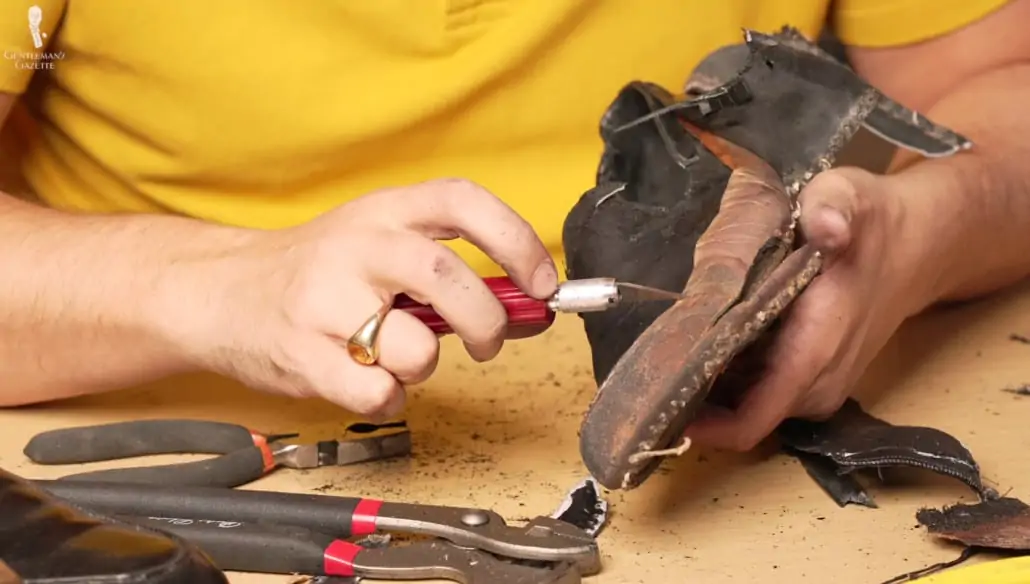
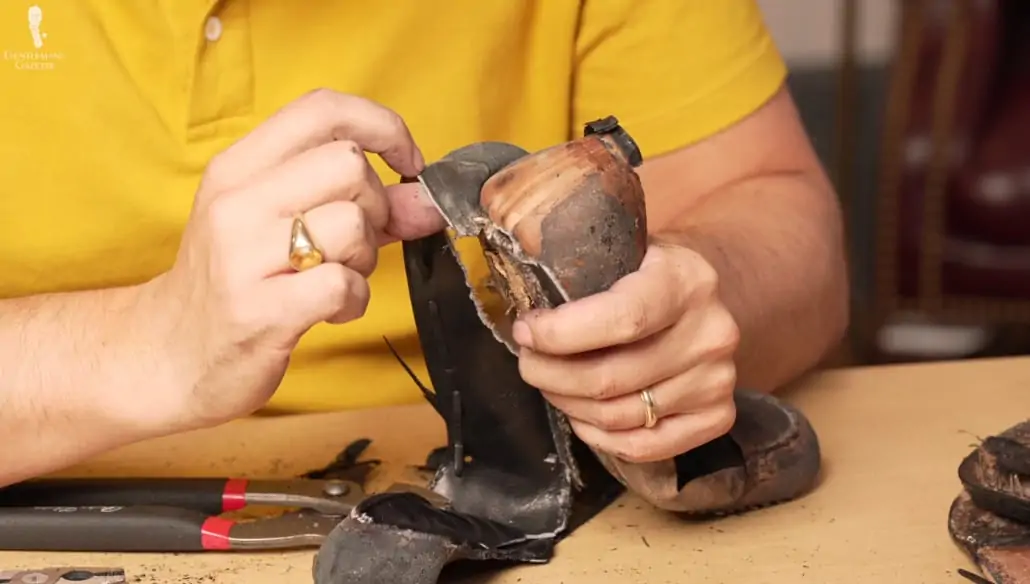
Here, you can see these two pieces of leather, the reinforcement on the side here and here. All leather.
I can see here, the leather is weaker than the seam. You can see here in the back a piece of tape is applied where it’s sewn, just so it’s reinforced. It won’t break there.
Lining
Got that taken care of. That is what’s left. Lining, reinforcements, back insole. So, you can see it’s all leather. It’s dry. But, it’s still all leather. Now, here, you can really see this beautiful insole and how this channel was worked out of this piece of leather.
Nothing in between leather and lining. Just the reinforcement. And here you can feel it’s quite thick. So, this leather is wetted and then put on. So, it really can keep that shape off the last. Pretty cool.
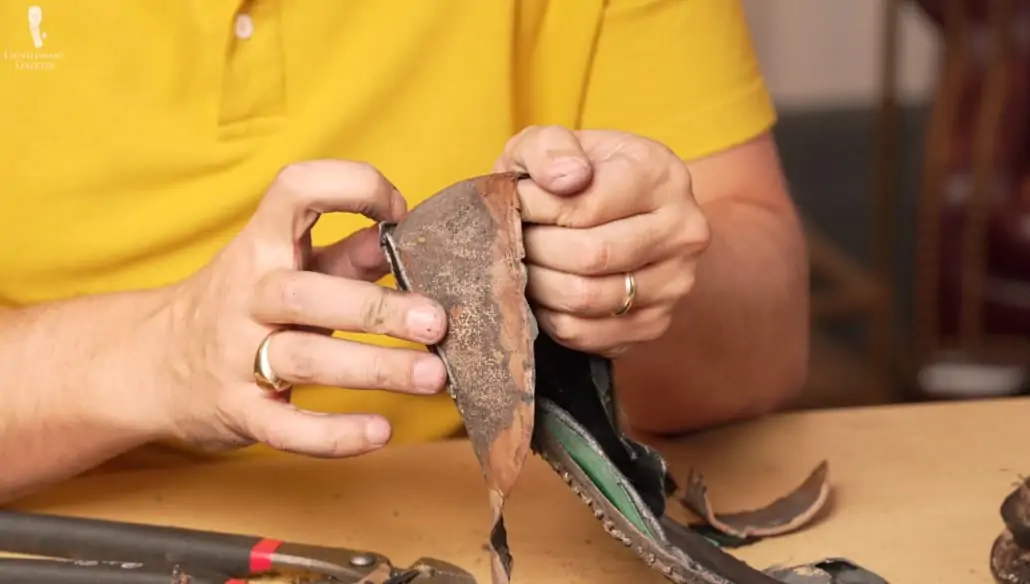
I can look at this. Attached here is really thick heel cap reinforcement. Very nice.
Innards of The Shoe
So, now, here, what we’ve left is the insole and the sock liner. Let’s take that off. Oh, look at that.
Here, we find a foam layer. So, maybe that’s standard procedure, maybe that was just adjusted once they did the fit and realized it had to be changed, or maybe that’s what the customer wanted. I don’t know. But, certainly interesting to see. There’s nothing wrong with a layer of foam when it makes sense or that’s what the wearer wants.
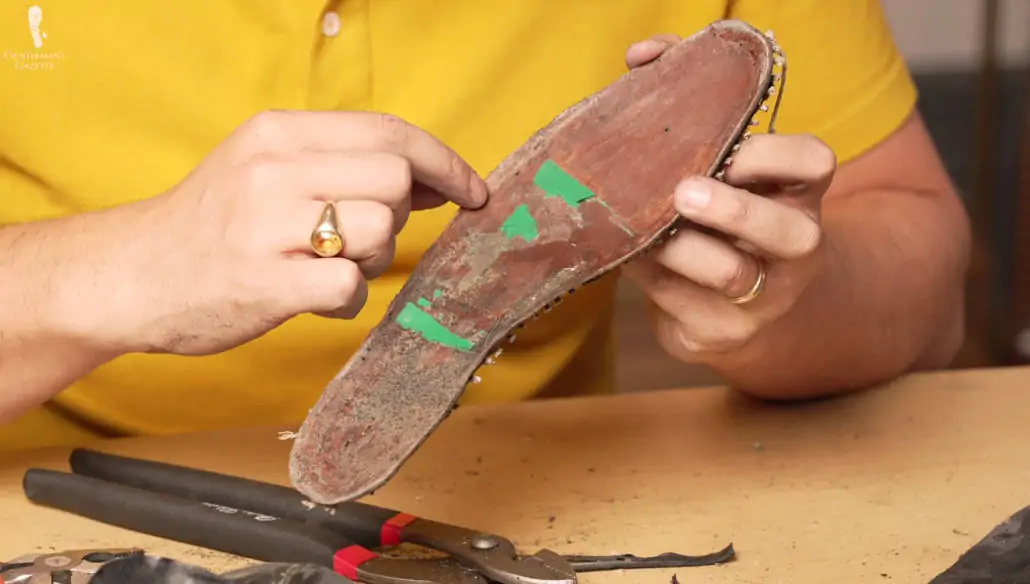
So, here’s the insole. And if you go with your finger, you can feel little divots. And that comes from down here when you have the channel and it’s sewn and it’s pulled together. You get that little feeling that something was hand welted there. That’s so often when the sock liner is on, you can’t feel that. But, if you touch the insole directly, you’ll definitely see it.
Other ways here, on the insole, there’s really nothing in here anymore. You can just see the nice channels and how that stuff is really in there. And it’s so stiff it even cracked my knife.
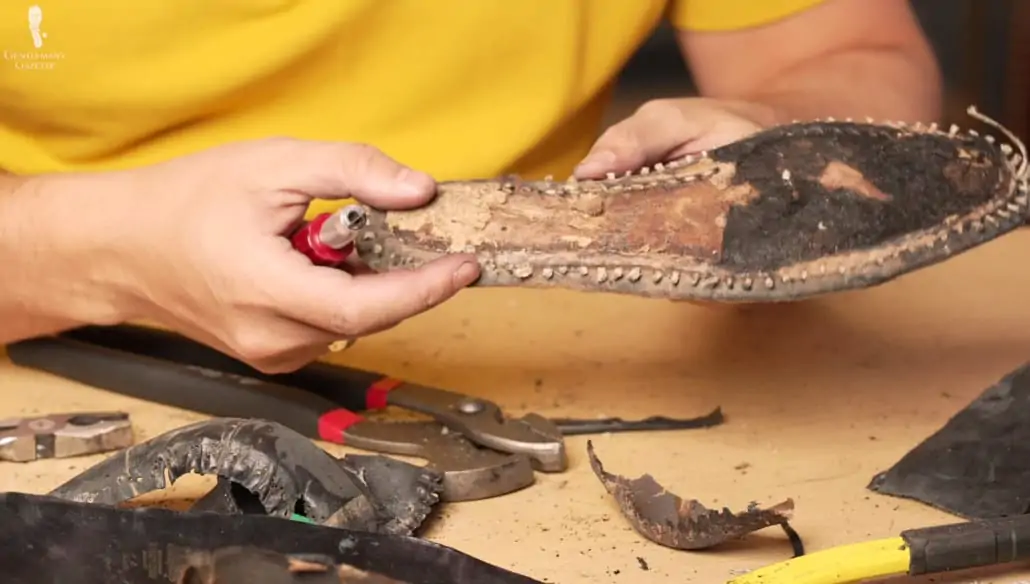
Conclusion on John Lobb London Bespoke Shoe
Sven Raphael Schneider: So, you can see, in a bespoke John Lobb shoe, there are fewer nails along here. You have the insole without the gem band. It’s all done by hand. All the caps are leather, right? The liner was leather. And it’s basically an all-leather shoe except for this foam and the thread.
There are obviously lots of nails in the heel that you wouldn’t quite see otherwise. And then, this really kind of hair-like material here. Surprised me. Cork, only back here. But, no shank. That’s definitely not what I would have expected.
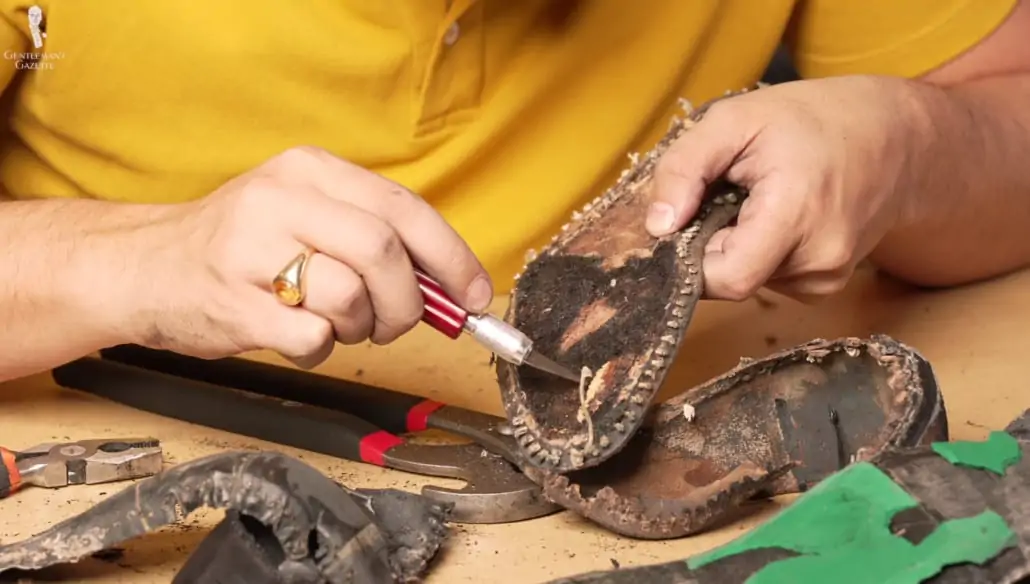
Otherwise, I mean, we can cut out that material. But, there’s nothing underneath here really, other than the pure leather. Here, you can see there’s some cork.
Conclusion
Sven Raphael Schneider: So, now, having seen that, would I buy a pair of $10,000 bespoke Lobb London shoes over a $1,500 pair of ready-to-wear Lobb Paris shoes? I don’t think so.
I can definitely see that the $10,000 shoe is much better made. It’s handmade. It takes more time. It has, you know, all the fit adjustments that you want. It has shoe trees. But, other bespoke shoemakers basically operate the same way.
There was nothing in here where I was like, “Wow!” They don’t use any special construction or materials or anything of that kind that would make the shoe a lot better than other bespoke offerings.
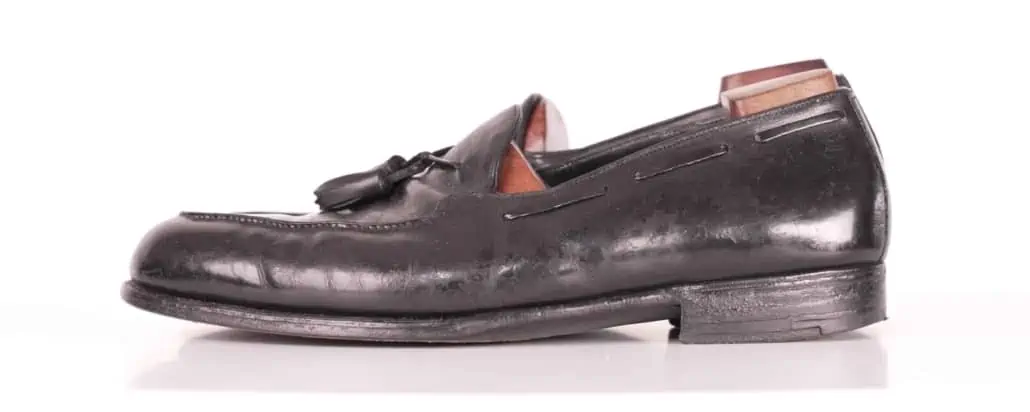
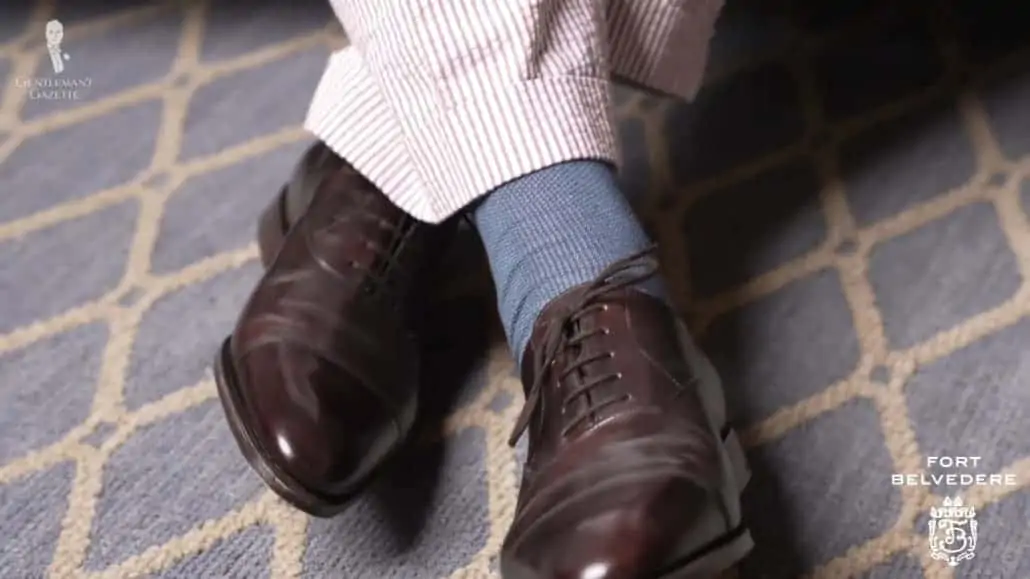
Now, with the bespoke shoe, obviously, the fit matters immensely and I can’t judge the fit based on that.
That being said, I trust that there are many shoemakers who can make you a well-fitting pair of bespoke shoes. In fact, in places like, you know, Italy or in Austria, you may find a pair of bespoke shoes from not-so-well-known shoemakers that is just about the price of a John Lobb ready-to-wear shoe.
So, in that case, I’d obviously always prefer the bespoke shoe for my craftsman over the factory shoe from John Lobb.
To learn if John Lobb Paris ready-to-wear shoes are worth it or not, check out our review.
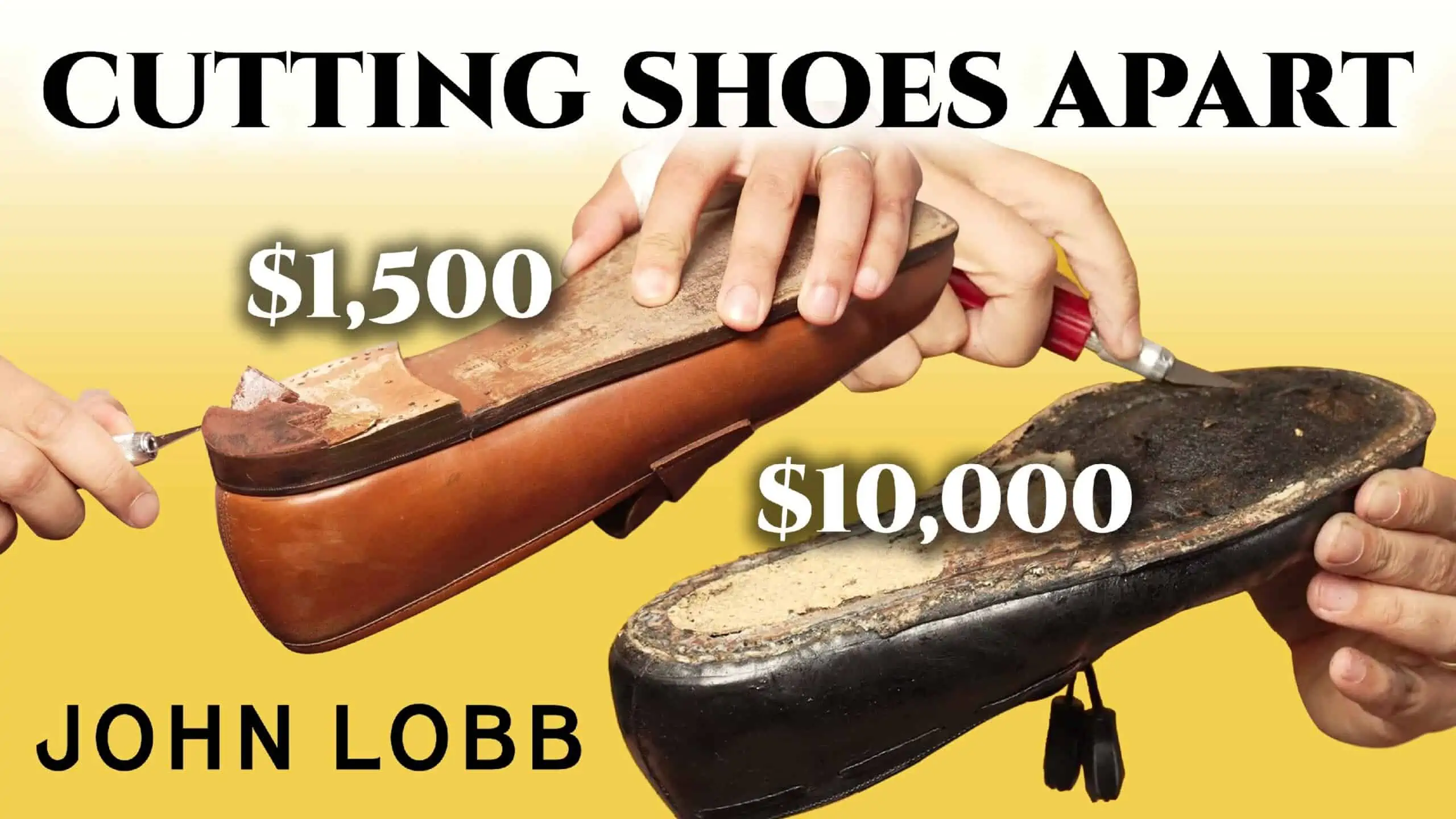
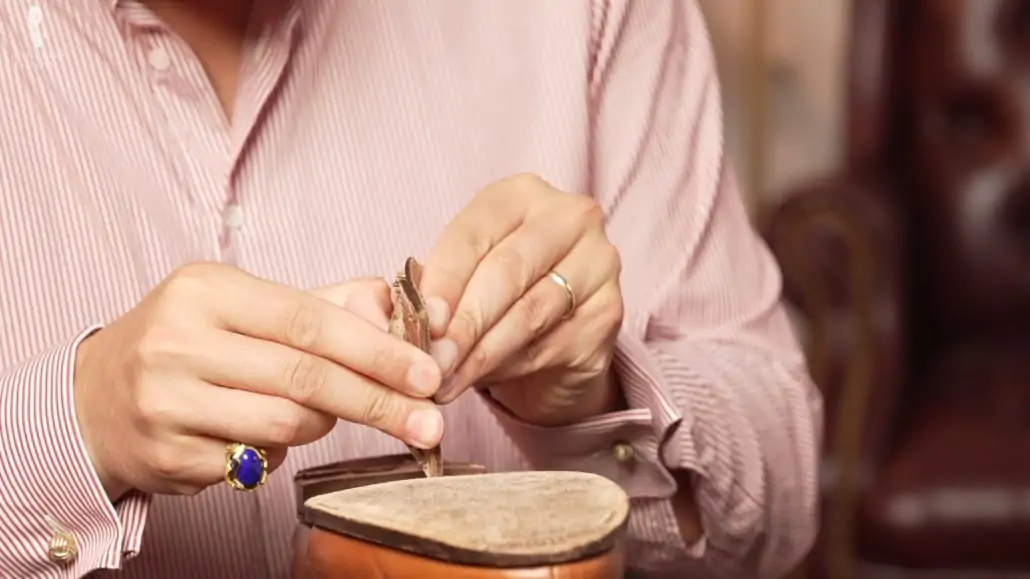
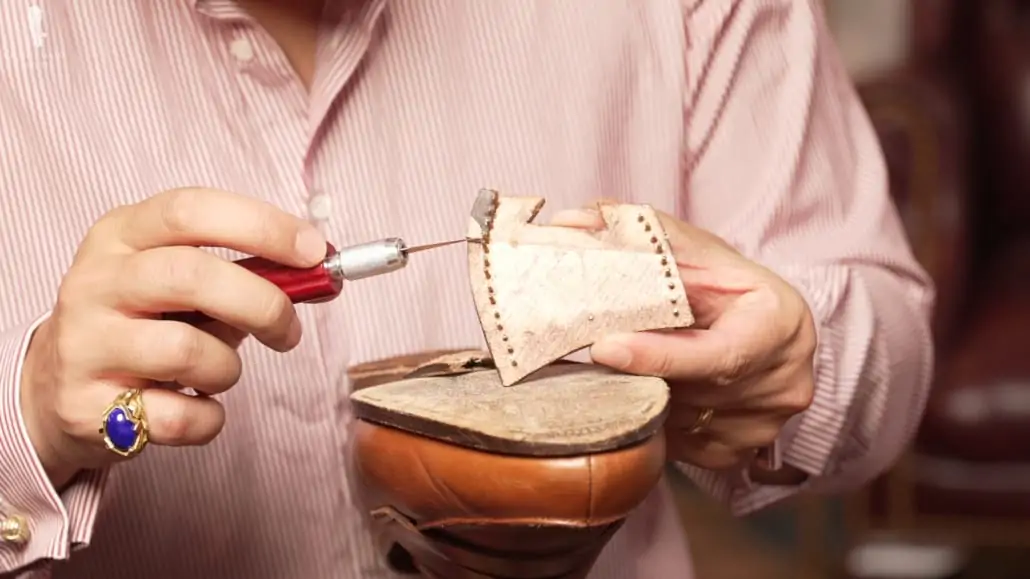
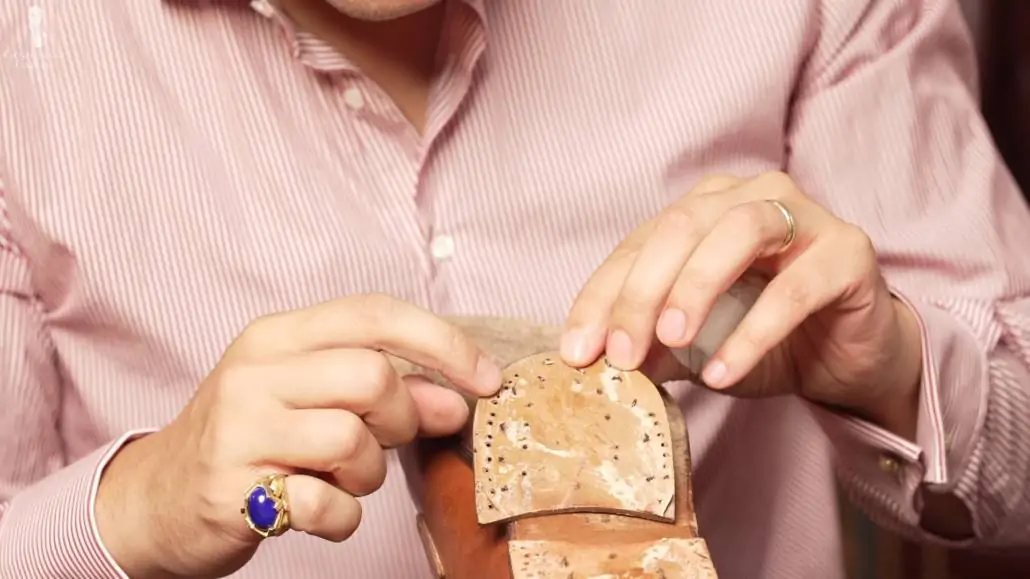
This is really an interesting post; you certainly have the patience to do such a thing, along with the desire to cut into a $10,000 pair of shoes; you don’t hear of that every day! Best wishes
Interesting. I would imagine that a fair bit of the cost is in making the personal lasts, the shop in St James’s Street and the work being done in the UK. Similarly a £10K Rolex actually has manufacturing costs of £1K. Personally, I’d be more inclined to spend money on handmade suits than shoes, but if money is no object…..
When it comes to handmade, bespoke shoes, one of the biggest manufacturing costs is time. So, as you rightly say, several hours to make bespoke lasts, then many hours on constructing the shoes around the lasts, which require skilled hands and quality materials (which don’t come cheap!). Once the upfront cost is broken down, the overall price does make sense. Of course, it’s the same for handmade, bespoke suits too! Whichever you choose to go for, either suits or shoes which are made by skilled craftsmen, the end results are usually very beautiful indeed.
Sven,
It was painful to watch you cut yourself. I hope that you are okay.
I was surprised to hear that there was plastic and cardboard in the $1,500 shoe. I don’t think that I would spend that much on a pair of shoes let alone $10,000 for a pair of bespoke. The most that I paid was $400 on my J.M. Weston’s back in 2000.
I was surprised how much detail is involved in constructing a pair of shoes.
Excellent video but painful to watch in the beginning !
Sven,
I think there is a mistake.
For the bespoke shoes,when you say: the right shoe has a much taller heel than the left one, so,this person, obviously, had a shorter right foot than the left one.
I don’t think so; for me it means that the person has a much taller leg than the other, not the foot.
Other than that, excellent video !
Yes, of course, I misspoke. One leg is longer than the other, that’s what I meant.
I have a number of pairs of lobb bespoke shoes. My view is that because they fit my feet perfectly and the material is of the very highest quality they will last me for the rest of my days. And, there is definitely something about the fit of bespoke that you can feel every time you wear them. Not the cheapest but solid value for money imo.
I live in Shanghai and have a pair of boots and dress shoes handmade. They cost me around $400 each around 8 years ago. I once brought them into a shop in Canada to get the soles replaced and the cobbler there commented on how well they were made. If you ever get to Asia, you can get some high-quality shoes made much cheaper than the prices quoted in this article.
When I went to the shop, they have books and books with every style imaginable. My boots were exact copies of Indiana Jones boots, which my brother picked up on immediately. I plan to get many more shoes made before I finally leave China.
Hi Neil, it sounds like you have a great pair of boots that you enjoy wearing!
There certainly are many makers in Asia who create beautiful, handmade shoes. Thankfully, in the internet age, these makers are picking up support and growing in popularity at a pace. John Lobb is a highly prestigious brand in the realm of classic menswear with a long and storied heritage, which is one of the reasons we wanted to showcase the difference between a pair of ready-to-wear and bespoke shoes that bear the Lobb name.
Sven,
Great video, I learned a lot here. I was surprised to see that the RTW had more “components” in the heel and sole, even though they were of lower-quality materials.
If you continue this series, may I suggest that you choose a company with brands at many different price points to show how quality scales with the price? For example, looking at the Ralph Lauren Corporation, you could dissect a Chaps polyester suit, a Lauren Ralph Lauren mid-tier suit, one from the Polo brand, and a Purple Label one.
Best,
Andrew